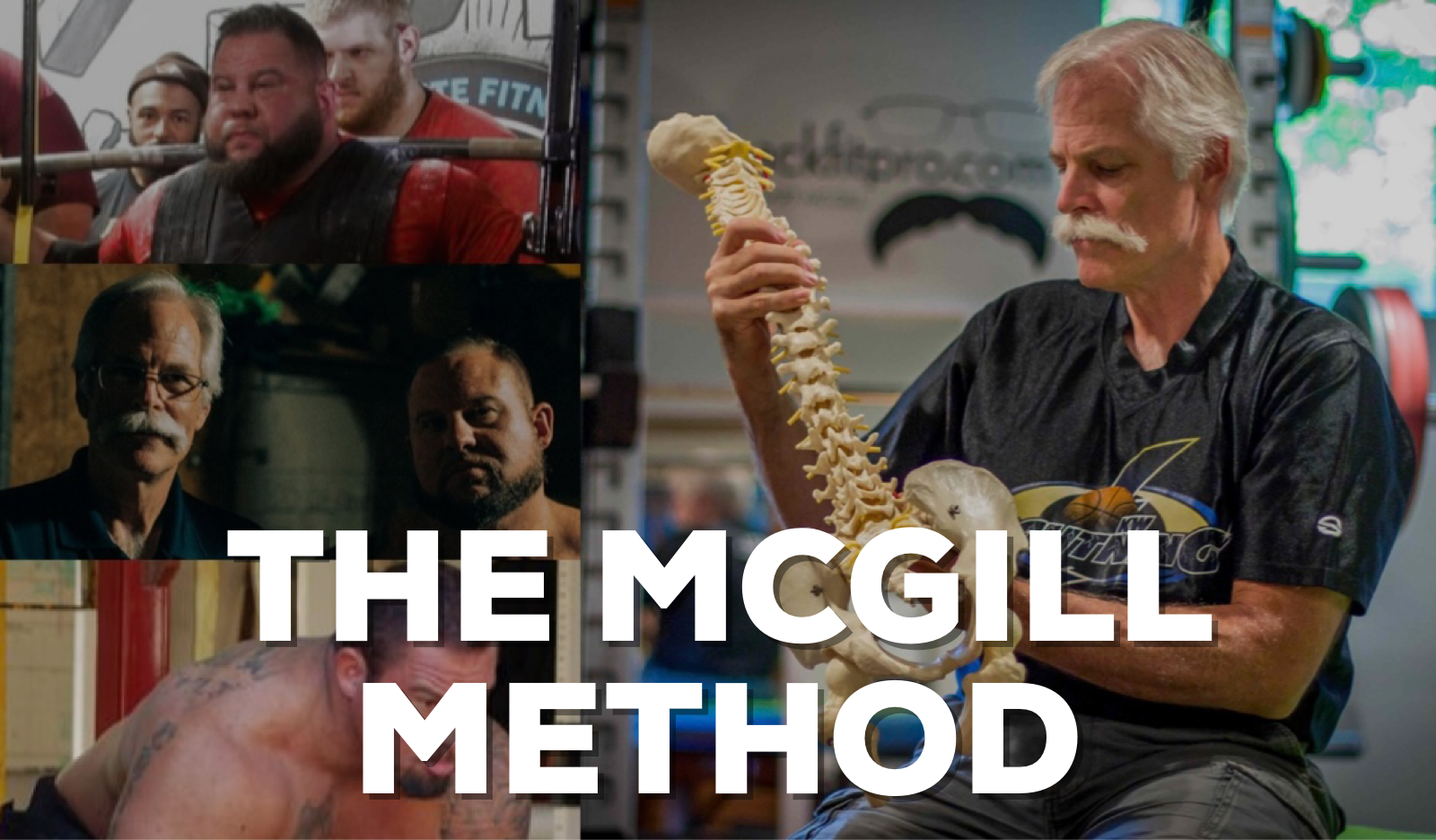
20 Apr Part 1 with Dr. McGill “what is the McGill method?”
Dr. McGill Part 1 “What is the McGill method?”
Many of you know that in May of 2013, Dr. McGill and I connected. Over the last 10 years, we have become excellent friends, business partners, and colleagues, as we have also worked together to help clients return to sport. I do not take our relationship highly. From the very start, we build our relationship on his honesty. One of the first things I learned from Stu was that he is a truth-teller. He’s not an ear-tickler. He will never tell anyone what they want to hear; he tells them what they need to hear. I learned this quickly as Stu said during our assessment that I needed to retire from powerlifting. I needed to listen to the seriousness of my back injury; I didn’t want to. Because of his sternness and seriousness, I probably focused more than I ever had, which likely was a part of my success. Many of you have read about this negotiation in Gift of Injury.
My purpose of this series is to give you an inside look at Stu by asking him 4 questions that tell you a lot about him, his work, and how he has come to where he is now. As he says in the above video, it was not planned 40 years ago; it’s all been sparked by curiosity “How does the spine work?”
“What is the McGill Method?”
“Identify the cause, wind down pain sensitivity, then restore athleticism. Know your science, listen to the patient, and know enough about the science to recognize the patterns, perform assessments, build the program, and encourage them to execute.”- Stu McGill
I’ll let this stand independently, but I highly suggest reading Back Mechanic and Ultimate Back Fitness and Performance 6th ed to understand the McGill Method.
The McGill method is NOT the big 3, or any exercise or avoiding any activity. It’s about a proper assessment, identifying the cause or causes of pain, and giving the anecdote.
Part 2 of this series will be live on Monday, 4/24, and we discuss training the core for powerlifters and strength athletes, why we suggest training the core the way we do, and how some can get away with more flexion, bending, and twisting than others.
Part 3 of this series will be live the following week as we discuss how some people can seemingly do everything “wrong,” according to Stu, but get better despite everything.
And Part 4 of this series is about how he tested surgically implanted intramuscular EMG on himself (with a surgeon) to understand how to activate deep muscles and how each type of pain is perceived/felt (Bone, muscle, Tendon, Fascia, nerve, etc.), and what it feels like. You don’t want to miss this one!
Brian Carroll
Latest posts by Brian Carroll (see all)
- Quick Rant: Core Exercises - July 26, 2024
- Physical Therapy Fails for Back Pain - July 25, 2024
- Quick Rant: Physical Therapists - July 19, 2024





Sorry, the comment form is closed at this time.